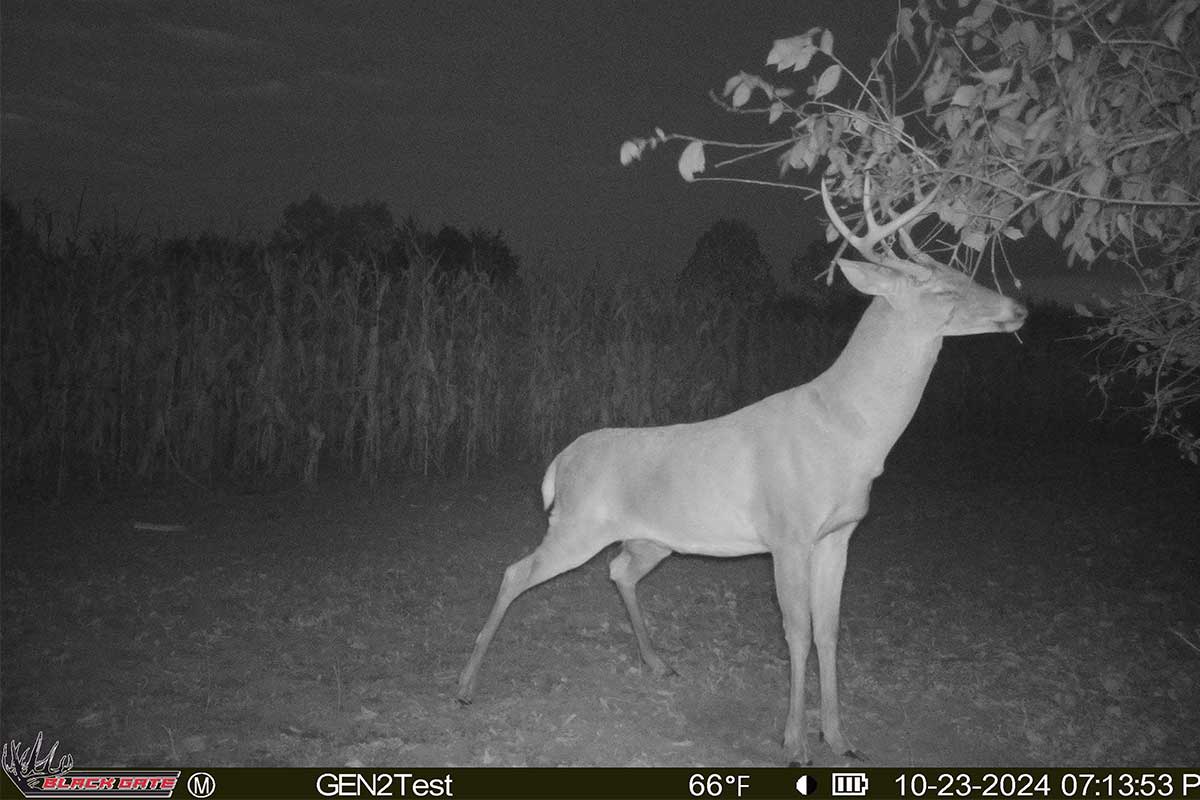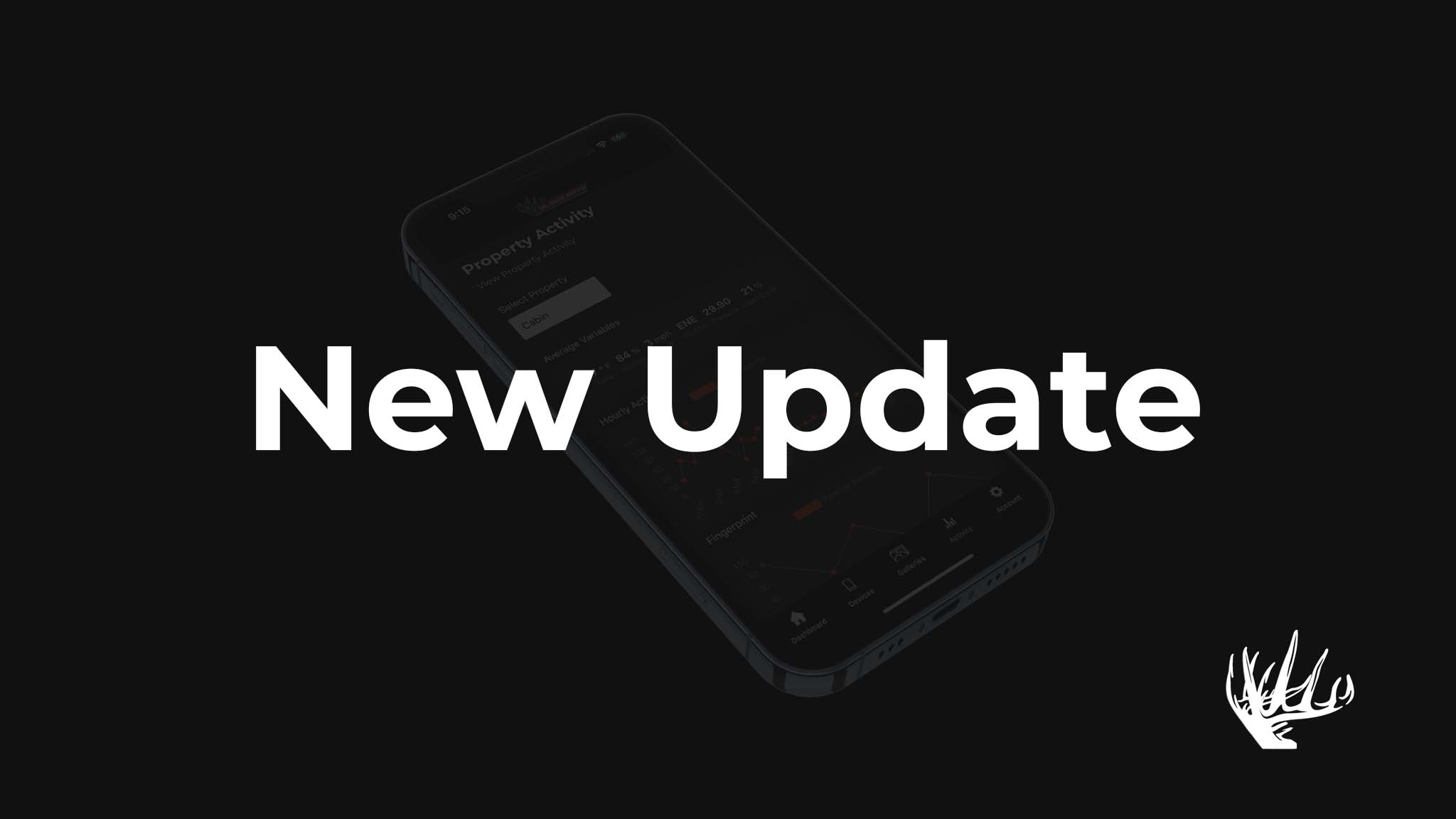October can be a feast or famine for whitetail hunters. The bucks are on the move—but not consistently. The rut is brewing—but not quite boiling. Food sources are changing, scrapes are opening up, and those daylight photos you’ve been waiting on are just one cold front away.
To capitalize on this window, you need more than just a good tree stand. You need a two-week plan that adapts to shifting deer behavior, and more importantly—you need to let your trail camera intel lead the way.
In this guide, we’ll give you a tactical breakdown of how to use Black Gate cellular trail cameras across two critical October weeks—covering feeding patterns, pre-rut activity, early rut transition, and how to plan your sits based on data, not guesses.
Week 1: October Feeding & Pre-Rut Surge
Primary Goal: Pattern movement based on food sources and early scrape activity.
October’s first half is still food-focused, especially for does. Bucks begin expanding their range, leaving rubs and scrapes, and checking on bedding areas—but they’re still tied to predictable movement zones. Use your trail cams to track evening feeding habits and subtle shifts in daily activity.
Trail Camera Scouting Plan
- Set cams on high-calorie food sources: Think white oaks, cut corn, food plots.
- Place cameras 20–30 yards off food: Bucks often hang back in staging cover.
- Monitor scrape lines on field edges or logging roads: Fresh scrapes = buck signpost central.
Best Time Windows to Monitor
- Evenings (5:00 PM to dusk): Consistent, reliable daylight movement.
- Mornings (6:30–8:30 AM): Especially following a cold front.
- Midday (11:00–2:00 PM): If scrapes near bedding are heating up.
Pro Tip from Black Gate
Use real-time cellular photo uploads to track multiple zones without pressure. Let the data show you which camera is picking up the most daylight movement—then strike.
Week 2: Transition to Early Rut Behavior
Primary Goal: Catch bucks shifting from food focus to doe searching.
By the second half of October, things start heating up. Bucks begin cruising, checking bedding areas, and revisiting scrapes with more aggression. The rut is close—but not fully here. This is the sweet spot when a well-timed sit can catch a mature buck slipping up.
Trail Camera Scouting Plan
- Shift cameras to pinch points and funnels: Especially ones leading from food to bedding.
- Set up on primary scrapes with overhanging licking branches: Bucks revisit these often.
- Monitor downwind trails of doe bedding areas: Bucks scent-checking is at a peak.
Best Time Windows to Monitor
- First light (6:30–8:00 AM): Bucks move after checking scrape lines at night.
- Mid-morning (9:00–11:00 AM): Prime time for transition from food to cover.
- All-day sits possible: Especially around cold fronts and falling barometric pressure.
Pro Tip from Black Gate
If your camera picks up a new buck cruising during daylight—move fast. These “ghost bucks” may only daylight once before they lock into nocturnal mode or start chasing does.
Bonus Strategy: Tagging a Buck, Then Switching to Recovery Mode
Let’s say you punch your tag early (well done!). Your camera strategy isn’t done yet.
Use the rest of October to:
- Collect scrape and rut activity data for future years
- Track herd behavior changes post-rut lockdown
- Scout for November firearm pressure zones
Move your cams to new areas—especially secluded thickets or overlooked funnels—to gather data on how bucks move after being pressured. This is gold for future hunts.
The October Camera Playbook (At a Glance)
|
Week |
Primary Focus |
Camera Setup |
Best Times to Monitor |
|
Week 1 |
Feeding & light pre-rut |
Field edges, staging zones, scrapes |
Evening & early morning |
|
Week 2 |
Doe-checking & cruising |
Funnels, downwind bedding trails |
Dawn, mid-morning, midday |
|
Recovery Mode |
Data for next year |
Security cover & low-pressure zones |
All-day passive monitoring |
Don’t Guess—Let the Cameras Speak
Every October hunt you take without fresh intel is a coin flip.
With Black Gate cellular trail cameras, you don’t have to wonder if your stand is hot or cold. You’ll see movement patterns unfold in real-time, letting you pivot, shift, and capitalize before the buck you’re chasing turns nocturnal—or disappears into lockdown.
Final Thought: Adapt or Miss Your Moment
October is dynamic. Movement shifts fast. The cold front hits and suddenly a scrape that’s been dead for days blows up. The clover plot that had five does last week goes quiet. If you’re not adjusting, you’re falling behind.
But if you’re scouting smart—with trail cameras doing the heavy lifting—you’ll always know when it’s time to move in.
Pattern. Pressure. Pursue. Then recover. That’s the Black Gate way.




Share:
Best Cellular Trail Cameras for Hunting Season 2025: What to Know Before You Buy
From Summer to Fall: Adjusting Your Trail Camera Techniques in October